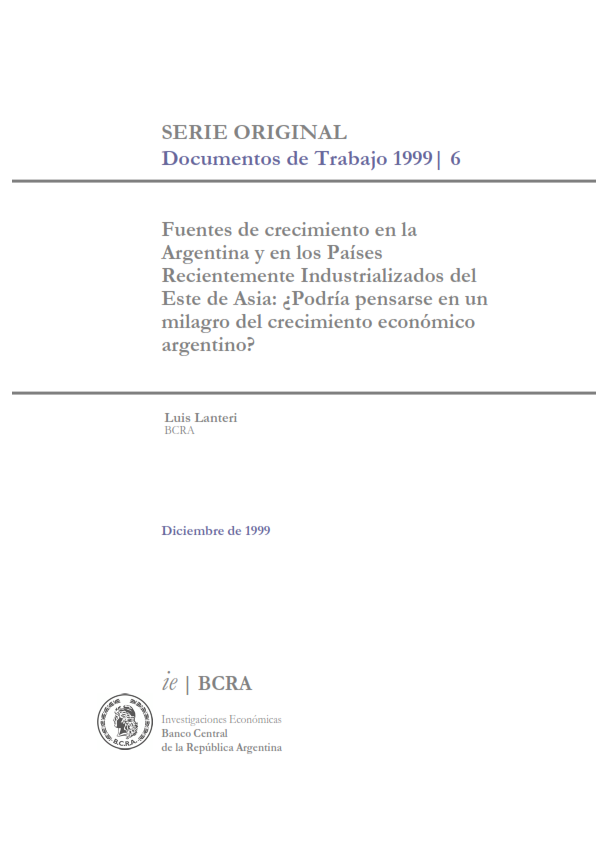Sources of growth in Argentina and the Newly Industrialized Countries of East Asia: Could Argentine economic growth be considered a miracle?
Working papers (original series) | 1999 | N 6
Keywords:
Economic growth, Productivity, Total factor productivityAbstract
Argentina has been growing at a remarkable rate in recent years. In this regard, in this work, the sources of economic growth in Argentina are identified, based on the proposal of the neoclassical theory of growth, during the period 1977/98 (after the Financial Reform) and, in particular, in the years of validity of the Convertibility Plan (1991/98). While the accumulation of inputs played a moderate role in Argentine economic growth, in the Convertibility period, the rapid growth of total factor productivity would be the variable that would explain most of the economic growth of those years. Since the economic reforms were implemented, productivity growth has become the most significant force driving the Argentine economy. In contrast, in the so-called Newly Industrialized Countries of East Asia (“East Asian Nics”), the rapid growth of output would be explained mainly by the rapid growth of inputs, with less evidence of improvements in efficiency. In the hypothesis of Krugman/Young, professors at MIT, economic growth that is based primarily on the expansion of inputs, rather than on productivity growth, would inevitably be subject to diminishing returns. For this reason, some economists could come to think that, instead of a “miracle” of the “East Asian Nics”, it would be appropriate to speak rather of a “miracle” of Argentine economic growth.
JEL classification: E25, O4, O5


